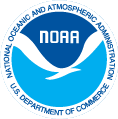W1 | W2 | W3 | W4 | W5 | W6 | W7 | W8 | W9
Comparing, Contrasting, and Integrating Statistical and Mechanistic Approaches Towards Spatial Interpolation
Lead Conveners:
- Bill Ball, JHU Dept. of Geography and Env. Engineering
- Frank Curriero, JHU Bloomberg School of Public Health
Papers & Presentations
- All papers, posters, and presentations for this workshop can be found on the CheMS Presentation page.
Description
In short, this is a workshop that will explore statistical and mechanistic (non-statistical) methods of data interpolation, with focus on recent developments and opportunities for interplay among the two paradigms to problems of interpolation in estuarine settings such as the Chesapeake Bay. Both mechanistic and statistical modeling techniques continue to become more sophisticated in response to the demands of understanding and managing important issues in complex systems (such as water quality in the Bay) and as made possible by recent developments in computer science. Data assimilation methods fit within this scope.
Within the field of statistics, spatial interpolation of data is often viewed as a prediction problem for which data-dependent procedures have been developed. One common technique is the regression method of kriging which provides a means of attaining statistically optimal spatial prediction for spatially correlated data. A distinguishing feature of kriging methods is that uncertainty is modeled explicitly using probabilistic tools and propagated through the prediction process. By contrast, traditional mechanistic (deterministic) models are simulations of reality based on the physical, chemical, and biological processes controlling the system but often lack statistical rigor, in terms of their ability to elucidate and characterize uncertainty. Data assimilation techniques have been suggested as a way to improve accuracy of interpolations from such models by continually updating model status through the assimilation of observed data to the fullest extent practical.
This workshop will aim to highlight key features of statistical and mechanistic approaches towards spatial interpolation, thus potentially moving these two schools of thought closer together. The workshop will then focus on identifying the most appropriate use of currently available methods and avenues for future research, as specifically oriented toward helping estuarine systems such as the Chesapeake Bay.
We expect a broad participation of scientists working in the field of statistics, environmental engineering, and modelers who are working on issues of data assimilation, and from those who are not necessarily "experts" in these areas but who have important voices as users of interpolation tools.
Items Submitted & Discussion Topics
Coming soon!




